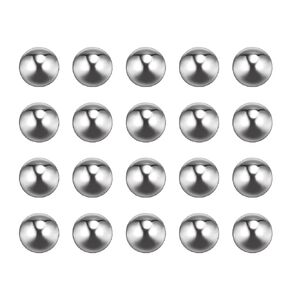- Shopping, made easy.
- /
- Get the app!
99.995% indium ingots for sale. Indium is almost a precious metal, a silver-white metal that in appearance closely resembles silver itself. Indium is critical to much cutting edge technology, especially those, like LCD screens, requiring a transparent conductor. Indium is soft, about as soft as refrigerated butter. It is this softness that makes indium useful for gaskets in high vacuum lines where plastics and oils won't work because they outgas under high vacuum. Indium has a low melting point, 156.68°C (314.9°F). Unlike mercury liquid indium has low surface tension. It flows like water and wets surfaces. The industrial utility of indium is such that it is considered an important strategic metal. The price of indium fluctuates, partly based on how much China is releasing on the market. Over the past decade indium has ranged in price from its current ca $180/kg for 99.995% purity to over $900/kg. Indium's average price tends to be similar to silver prices. The natural abundance of In also is about that of silver. Like rhenium, indium is one the few elements whose major isotope is unstable. 115In, which comprises 96% of all natural indium and decays by beta emission to 115Cd. The half life of this decay 450,000,000,000,000 (450 trillion) years-- is so long that decays can be detected only with extremely sensitive instruments. It is not a radiological hazard. Indium sings when it is bent. One last thing, a pet peeve: indium is not a rare earth metal. “Rare earth” is not a general term for rare base metals, but refers to a group of chemically similar meals called the lanthanides, which are the top of the two separate rows of elements that usually are set below the rest of the table. Most of the rare earths are not rare.
 -13%
METALLIXITY Copper Tube (3mm OD x 0.25mm Wall T x 200mm L) 6Pcs, Straight Tubing - for Home Furnishing, Machinery, DIY Handicraft
KWD 3.500
-13%
METALLIXITY Copper Tube (3mm OD x 0.25mm Wall T x 200mm L) 6Pcs, Straight Tubing - for Home Furnishing, Machinery, DIY Handicraft
KWD 3.500
 4pcs 0.315"(8mm) 12" Long Stainless Steel Hexagonal Hex Bar Rod Shaft
KWD 11.500
4pcs 0.315"(8mm) 12" Long Stainless Steel Hexagonal Hex Bar Rod Shaft
KWD 11.500
 uxcell 6063 Aluminum Round Tube, 300mm Length 17mm OD 10mm Inner Dia Seamless Aluminum Straight Tubing 3 Pcs
KWD 6
uxcell 6063 Aluminum Round Tube, 300mm Length 17mm OD 10mm Inner Dia Seamless Aluminum Straight Tubing 3 Pcs
KWD 6
 uxcell 50pcs 11mm 201 Stainless Steel Bearing Balls G1000 Precision
KWD 5.500
uxcell 50pcs 11mm 201 Stainless Steel Bearing Balls G1000 Precision
KWD 5.500